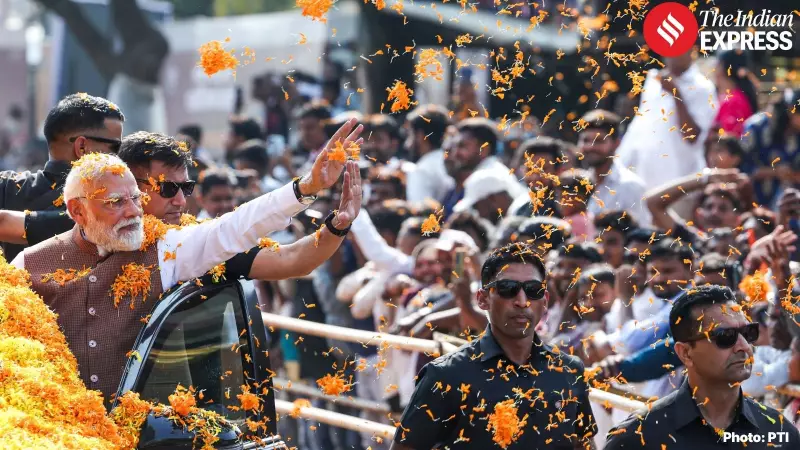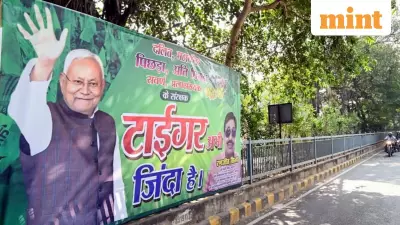
Prime Minister Narendra Modi marked a significant milestone in tribal welfare development with his visit to Gujarat's Narmada district on Thursday, November 15, 2025. The visit coincided with Janjatiya Gaurav Divas, a day dedicated to celebrating India's rich tribal heritage and contributions.
Spiritual Beginning and Historical Significance
The Prime Minister's day began with a deeply symbolic visit to the Devmogra Mata temple in Devmogra village, where he offered prayers. This spiritual gesture held special meaning for the local tribal communities who revere the temple as an important cultural and religious site.
Following the temple visit, PM Modi traveled by road to Dediapada in Narmada district, where thousands of enthusiastic supporters gathered to welcome him. The main event celebrated the 150th birth anniversary of tribal icon Birsa Munda, paying tribute to the legendary freedom fighter who inspired tribal communities across India.
Massive Infrastructure Push for Tribal Development
During the event, the Prime Minister inaugurated and laid foundation stones for infrastructure and welfare projects valued at over ₹9,700 crore, marking one of the largest single-day investments in tribal development in recent history.
The comprehensive development package included multiple initiatives across various sectors:
Housing Revolution: PM Modi performed Grih Pravesh (house-warming) ceremonies for 100,000 tribal homes constructed under the Pradhan Mantri Janjati Adivasi Nyaya Maha Abhiyan (PM-JANMAN) and DA-JAGUA schemes. This massive housing initiative aims to provide dignified living conditions for tribal families across the region.
Educational Empowerment: In a significant boost to tribal education, the Prime Minister inaugurated 42 Eklavya Model Residential Schools (EMRS). These institutions are designed to provide quality education to tribal students, furthering the government's vision of education for all and creating new opportunities for the younger generation.
Connectivity and Community Infrastructure
The development package also focused heavily on improving connectivity and creating community spaces that would serve as hubs for social and economic activities.
Transportation Boost: PM Modi flagged off 250 new buses destined for 14 tribal districts, addressing the critical need for better transportation in remote and underserved areas. This initiative is expected to significantly improve mobility and access to essential services for tribal communities.
Road Infrastructure: The foundation was laid for 748 kilometers of new roads in tribal areas, a project that promises to transform accessibility and open up new economic opportunities by connecting remote villages with urban centers and markets.
Community Centers: The Prime Minister also laid the foundation for 228 multipurpose community centres that will function as hubs for tribal-led development and social cohesion. These centers are envisioned as spaces for community gatherings, skill development programs, and cultural preservation activities.
Vision for Inclusive Growth
Speaking at the event, PM Modi emphasized his government's commitment to accelerating inclusive growth and uplifting tribal communities not just in Gujarat but across the nation. The comprehensive development package represents a strategic approach to addressing multiple aspects of tribal welfare simultaneously.
The timing of these announcements on Janjatiya Gaurav Divas underscores the government's recognition of tribal communities' historical contributions and their crucial role in nation-building. By combining immediate welfare measures with long-term infrastructure development, the initiatives aim to create sustainable progress while honoring tribal heritage and identity.
The massive investment in tribal areas reflects the government's broader strategy of ensuring that development reaches the most marginalized communities, bridging infrastructure gaps, and creating new opportunities for economic and social advancement in regions that have historically faced developmental challenges.





